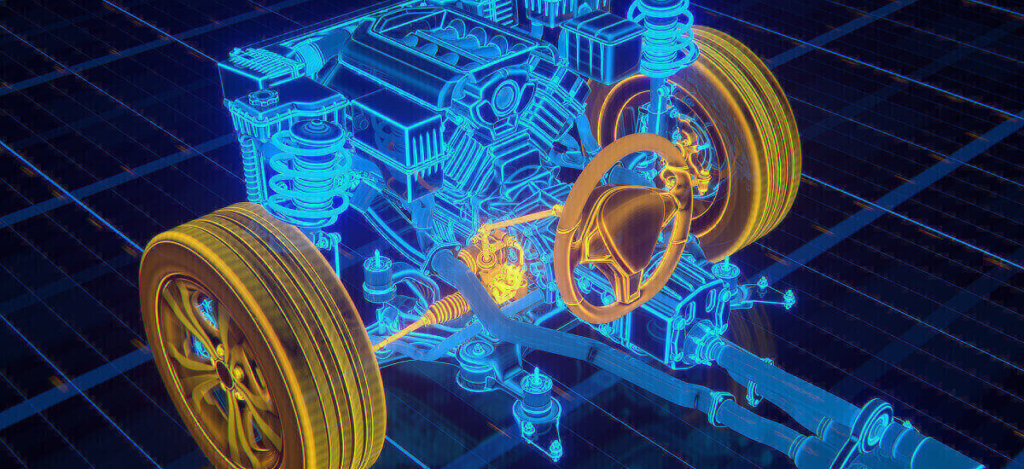Every component in your car plays a crucial role in maintaining functionality. The steering system is also an important part because it allows a driver to have better control of the car. If the steering mechanism has no issue, you can easily manage directional changes. Your driver needs to put less effort into driving the vehicle on rough road surfaces. So, a car should have a steering system to ensure your safety. However, automotive steering mechanisms can be categorized in various ways.

Why does a car need a steering system?
Steering systems in a vehicle are available in electronic or mechanical versions, allowing you to control the vehicle’s direction. They connect your inputs from steering systems to wheels to facilitate precise control of steering. The major role of an automotive steering mechanism is to transform your steering input into the related wheel movements.
So, the steering mechanism is highly important for improving the maneuverability and safety of your car. A well-functioning automotive steering ensures you can easily navigate obstacles and curves on the highway.
It provides better control and quick response. So, you can maintain stability and avoid collisions. A reliable system is essential to maintain your automotive alignment and performance on the road
A steering system consists of different parts
A car’s steering system comprises various parts-
- Steering wheel– The driver operates it to turn the car in the preferred direction. The steering wheel includes switches for traffic indication and a windshield wiper.
- Steering linkage– It constitutes a pitman arm, tie rod, and other parts.
- Steering gear– It allows your car to take a turn by sending the driver’s input.
- Ball bearings– Ball joints are essential to connect the control arm with the steering knuckle.
- Drop arm– This component delivers the motion to the tie rod from a steering gear. It happens when you turn your car’s steering wheel to the right or left.
Automotive steering mechanisms of different types
Innovative cars in the automobile market have various types of steering systems.
Variable Ratio Automotive Steering
The steering system has a unique tooth pitch. If the steering wheel is adjacent to the central position, it reduces the responsiveness of the steering. So, the wheel becomes highly sensitive to the steering wheel’s circular motion.
A variable-ratio automotive steering system will boost the operating function of power-assisted and manual steering.
Manual automotive steering
If your car has a manual steering mechanism, it needs the driver’s physical effort to turn the wheels. It uses a steering gearbox and mechanical linkages to send the input of your driver to the wheels.
The manual steering includes a range of components like tie rods and steering gearboxes.
The gearbox receives the rotational motion transferred by the steering column. It causes the conversion of this motion into a linear one.
Recirculating Ball Automotive Steering
It is another type of steering system known as the recirculating ball and nut. Traditional trucks and vintage cars have this steering system. They work differently from other steering mechanisms. There are 2 gears to form the steering system. A block is attached to a threaded shaft. The threaded block allows the large worm gear to pass through it smoothly. The sector gear remains fitted to the teeth of the gear. There is a connection between the sector gear and the pitman’s arm, which is linked to a tie rod. Ball bearings in the block fill the thread of the worm gear.
Moreover, the shaft moves with the wheel of the steering system. The fastener prevents the gear from moving up and down. It causes a revolution of the worm gear. On the contrary, the block rotates because nothing can hold it firm.
Power Steering System
Designed as a mechanical device, a power steering system streamlines the way to move or steer the car. It boosts the steering effort needed to rotate the wheels. The pump in the power steering system keeps the hydraulic fluid compressed. It ensures the fluid enters the power steering system to assist the driver. When you move at a standard speed or your car is stationary, the hydraulic or electric fluid regulates the steering system’s power. You can steer the wheel with a little effort.
Which type of steering systems do electric vehicles have?
Most electric car buyers want to know about the steering wheels of EVs. Modern electric vehicles have steering wheels of unique sizes. So, understanding the steering wheel’s dimension in an electric car is important for having a comfortable ride. The steering wheel’s size is different when compared to regular gasoline-powered automobiles. EVs have smaller steering wheels. But, the exact size depends on the car’s model, ergonomics, and steering system’s type. Most EV manufacturers decide on larger or smaller steering wheels depending on the design and aesthetics of the car.
Power steering systems in EVs and their characteristics
Traditionally, a hydraulic power steering mechanism is used for electric cars. The system relies on hydraulic pressure created by the pump. The pressure is applied to allow the driver to turn the wheels. Power steering is found in traditional vehicles and is highly reliable. But, it is not always the right choice for EVs because the steering system needs a constant source of power. So, it may lead to a loss of energy.
That is why the best alternative is EPS or electric power steering, which uses a rack-and-pinion mechanism and an electric motor. The overall system enables you to turn the wheels. The car battery powers the electric motor, which is highly efficient for your EV. A drive-by-wire steering system is also used for electric cars.
Conclusion
Automotive steering mechanisms convert the steering wheel’s rotation into the road wheel’s swiveling movement. Steering wheels in a traditional car are different from those found in electric cars. So, learn about the steering mechanism of your vehicle before driving it.



